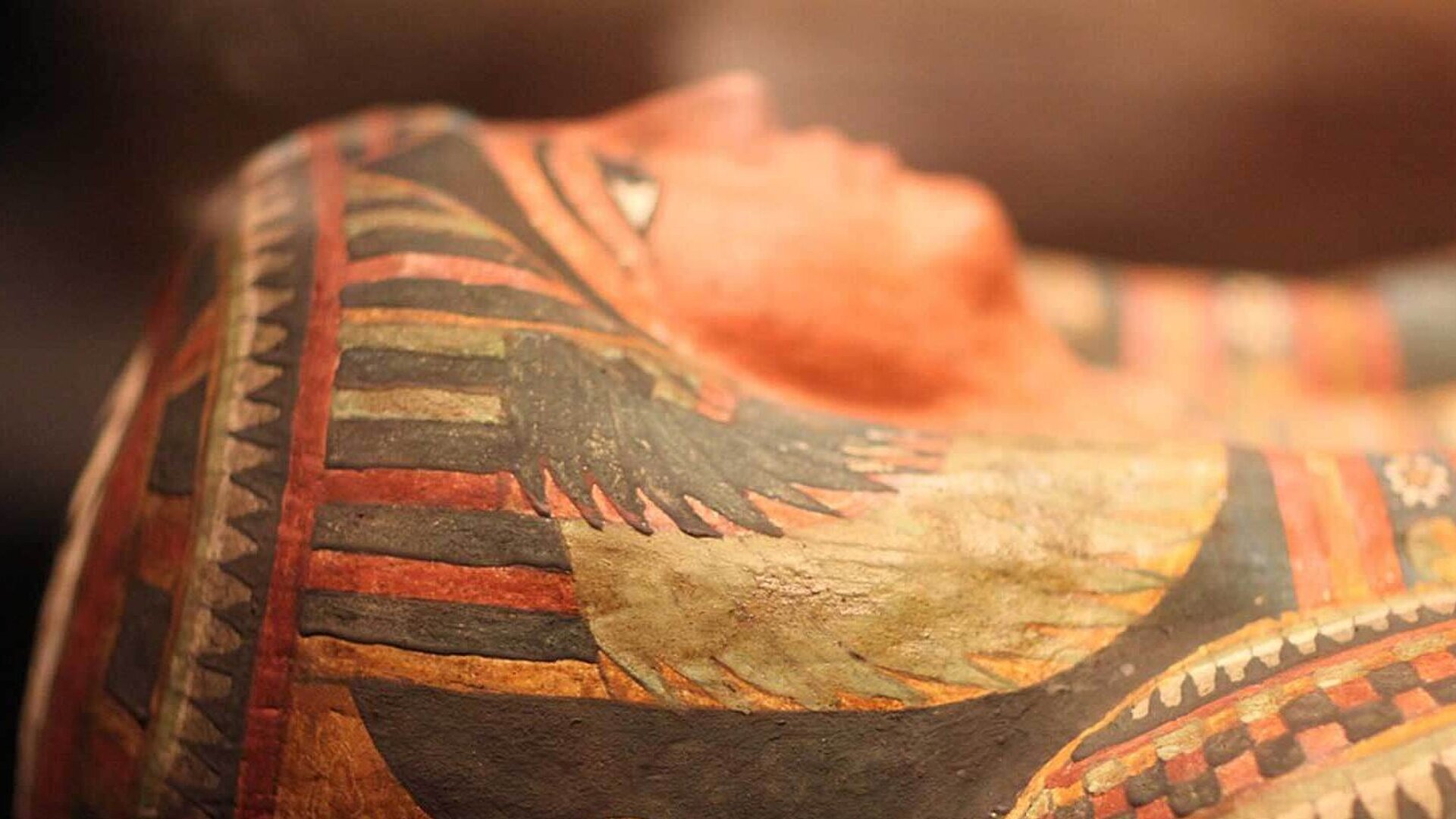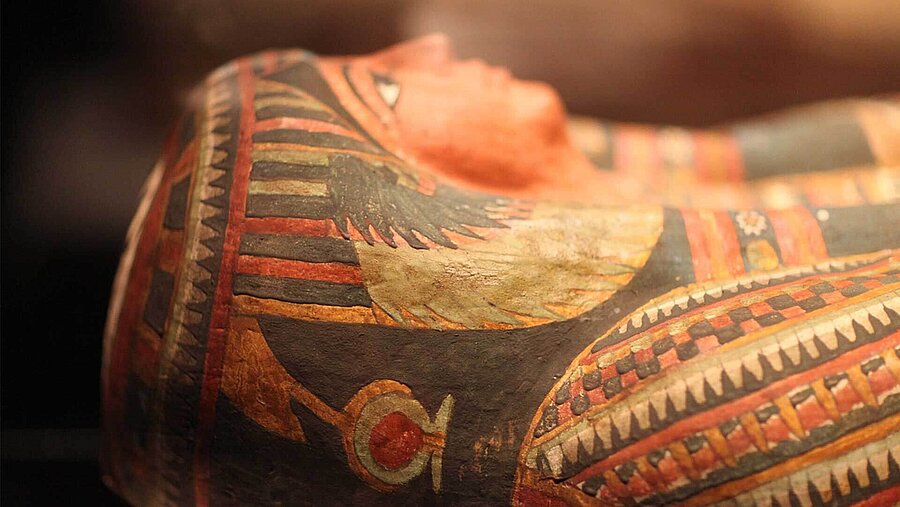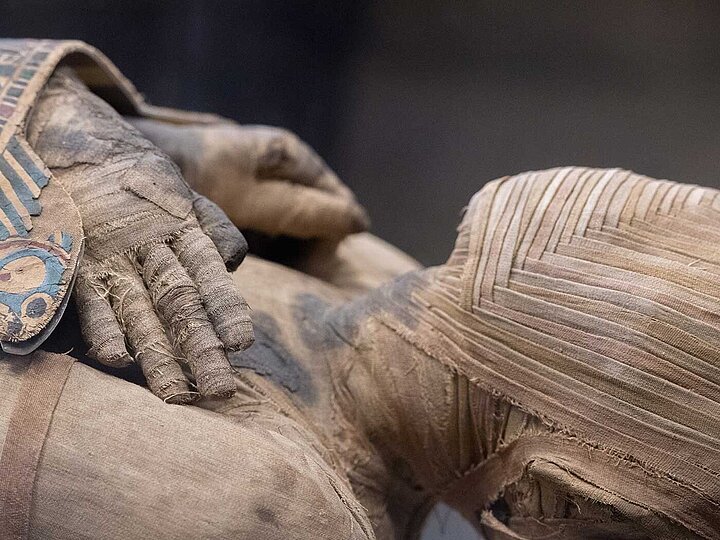What's cooking, mummy?

What can isotopes tell us about the diet of the Ancient Egyptians? And what do these insights into their diet tell us about the economy, trade and wealth of their time? Dr. François Fourel looks for the answers by investigating the stable isotope ratios of centuries-old mummies.
Why research the nutrition of Ancient Egyptians?
When Dr. François Fourel examined his first mummy sample, his original intention was to research climate variations in Ancient Egypt. It was only during the course of his work that he realized this would also enable him to find information about their dietary habits. Dr. Fourel is a research engineer at the Centre National de la Recherche Scientifique (CNRS), where he heads the Laboratory for the Ecology of Natural and Anthropogenic Hydrosystems at the University Claude Bernard Lyon 1 in Lyon. He is very busy developing new analytical techniques for stable isotopes. Their analysis can, among other things, provide important information about the ecology and ecophysiology of bygone eras on Earth and the people who lived then.
Dr. François Fourel, Research engineer at the Centre National de la Recherche Scientifique (CNRS) & Head of the Laboratory for the Ecology of Natural and Anthropogenic Hydrosystems at the University Claude Bernard Lyon 1 in Lyon.

Why nutrition plays such an important role in understanding ancient cultures is obvious: it reflects a wide range of living conditions. The important thing here is not so much whether the meal was tasty, but whether it was luxurious, allowing conclusions to be drawn about the food supply and wealth of a society. It can also tell us whether local or imported food was on the menu, which allows statements to be made about a society's economy and trade. Or how advanced agricultural technologies were developed, which was also reflected in the dietary variations. Until now, there were only two ways to draw conclusions about the diet of the Ancient Egyptians: by interpreting hieroglyphs and by analyzing food remains in tombs and settlement sites. Both methods, however, tended to yield conjectures rather than unambiguous facts. Dr. Fourel has now introduced a third method, the results of which provide clear information.
Samples are hard to get
The solution lies in the isotopes – more precisely, in the analysis of stable isotopes. The composition of carbon, nitrogen and sulfur is measured in hard and soft tissues, allowing the diet of the Ancient Egyptians to be determined in more detail. The relative proportions of plant and animal proteins are also determined and inferences are made about whether they are of terrestrial or aquatic origin. Unlike unstable isotopes, which emit radioactive radiation, stable isotopes remain in their natural ratio. This means that the value measured today is almost unadulterated and allows accurate statements to be made – in this case about nutrition in Ancient Egypt. Some compromises must be made, however, as with each sample taken from a mummy we lose both a piece of history and part of the mummy forever. As evidence of a long-forgotten era, they are so valuable to museums that researchers require a great deal of effort and patience to obtain releases for exhibits.
With each sample taken from a mummy, we lose both a piece of history and part of the mummy forever.
"You have to negotiate with museum curators which is not always easy," Dr. Fourel says. Since taking samples inevitably alters the mummies, they would have a hard time making a good case for it. “However, by further developing our analysis techniques, we can extract more and more information from fewer and fewer samples. We then have to convince those in charge that the findings are worth these small sacrifices." What helps him with his argumentation is the multiisotope approach of our vario PYRO cube®. The instrument makes it possible to obtain sequential CNS determinations from a single sample, thus keeping the amount of material required to a minimum. The increased sensitivity of the elemental analyzer with isotope ratio mass spectrometry (EA-IRMS) has allowed Dr. Fourel and his team to gain interesting new insights into a fascinating area of research.
Find out more
If you would like to find out more about Dr. François Fourel's research, take a look at the publication “Diet of ancient Egyptians inferred from stable isotope systematics" that was published in the Journal of Archaeological Science, which describes his research in greater detail.
Get an insight about Dr. François Fourel's work at the CNRS (Centre national de la recherche scientifique) Research Engineer in charge of a stable isotope mass spectrometry facility at the University Claude Bernard Lyon1in our Customer Spotlight.
Do not miss any news articles
NEWSLETTER
We will constantly publish new blog articles. Register for our newsletter to stay up-to-date and get informed about latest blog articles, news and trends.


